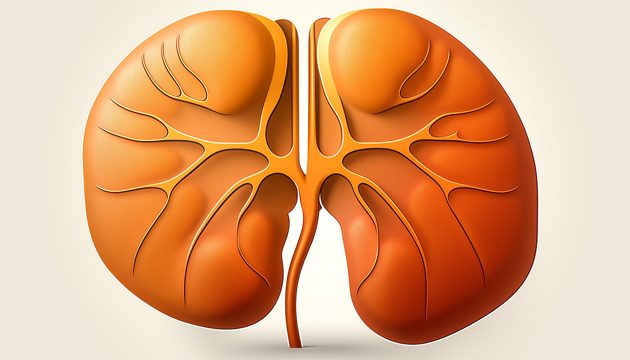About Dialysis
Dialysis is a medical procedure that helps perform the functions of kidneys when they are unable to do so. It is a lifeline for individuals with kidney failure or diseases that impair kidney function.
The process involves removing waste products and extra fluid from the blood, which are normally eliminated by healthy kidneys. Dialysis, a groundbreaking medical procedure, serves as an essential lifeline for individuals grappling with kidney failure or diseases that disrupt normal kidney functionality. This life-saving intervention steps in when your kidneys are unable to carry out their vital task of filtering waste from your bloodstream. Imagine it as a surrogate kidney, tirelessly working to ensure the stability of the body's chemical equilibrium. This extraordinary process meticulously filters out waste products and excessive fluid from the blood, elements that healthy kidneys naturally discard.

It's a testament to medical ingenuity, mirroring the complexities of the human body's internal cleaning system. Picture it as a sophisticated, biological car wash for your blood, vigilantly scrubbing away harmful toxins that could otherwise wreak havoc on your body's delicate balance.
In essence, dialysis isn't just a medical procedure - it's a life-restoring measure for those with impaired kidney function. It ensures that individuals living with kidney diseases can continue to lead fulfilling lives, offering a beacon of hope amidst adversity. As such, the critical role of dialysis in modern medicine cannot be overstated, as it quite literally takes over the reins from the kidneys, maintaining our body's natural waste management system.
Dialysis Use
Dialysis is used when a person’s kidneys can no longer take care of the body’s needs. Its often employed when there is severe kidney damage or disease that has progressed to end-stage renal disease (ESRD).
It also can be used in acute situations, such as when a sudden injury leads to kidney failure. Dialysis, a pivotal medical procedure, is typically utilized when an individual's kidneys have reached a critical state where they can no longer efficiently fulfill their role in the body's intricate system. This procedure becomes a lifeline when the kidneys, our body's natural detoxifiers, are severely damaged or ravaged by disease, often when it has escalated to a stage referred to as end-stage renal disease (ESRD). ESRD is a life-threatening condition wherein the kidneys are almost, or entirely, unable to function, hence making dialysis not just a choice, but a necessity for survival.

However, the application of dialysis is not confined to long-term kidney impairments alone. It can also serve as an immediate, temporary solution in acute situations where an unexpected injury has resulted in abrupt kidney failure.
These instances are often characterized by a sudden drop in kidney function, leading to an urgent need for dialysis to perform the job of the kidneys while they heal or until a more permanent solution is found. In essence, dialysis is a testament to medical innovation, stepping in to mimic the function of the kidneys when they are unable to meet the body's needs. Whether it's a long-term requirement due to chronic kidney disease or a short-term solution to deal with a sudden kidney failure, dialysis plays a crucial role in maintaining the body's balance, thus providing individuals with a fighting chance against kidney disease.
How Dialysis Works
Dialysis works by utilizing a dialyzer, also known as an artificial kidney, to clean the blood. The dialyzer contains a semi-permeable membrane through which the blood is passed.
Waste products and excess fluids move from the blood, across the membrane, and into a dialysate solution which is then discarded. Dialysis, an ingenious medical process, operates by harnessing the power of a specialized piece of equipment known as a dialyzer, frequently referred to as an artificial kidney. This intricate device is tasked with the critical job of purifying the bloodstream. Intricately designed, the dialyzer is composed of a semi-permeable membrane, a feat of engineering that allows the blood to pass through while acting as a selective barrier. Imagine the blood's journey, coursing through this membrane, a veritable highway for the transport of impurities. As the blood flows through this artificial kidney, waste products and surplus fluids, unwanted hitchhikers in your bloodstream, are expertly filtered out.

These unwanted substances are then transferred across the membrane, a process that works much like the osmosis you may remember from high school biology. But the process doesn't stop there.
After the detritus has been separated from the blood, it's collected into a dialysate solution. This solution, a sort of holding tank for the waste, serves a double purpose. Not only does it collect the waste products, but it also ensures they are safely contained and ready for disposal. Once the dialysis session is completed, this waste-laden solution is efficiently discarded, leaving the blood clean and free of impurities. It's a fascinating, yet vital process, working tirelessly to keep your body's internal environment balanced and healthy.
Types of Dialysis
There are two main types of dialysis - Hemodialysis and Peritoneal dialysis. Hemodialysis involves filtering the blood outside of the body through a machine, while Peritoneal dialysis uses the lining of the abdominal cavity to filter the blood inside the body.
In the fascinating realm of medical science, dialysis stands as a life-saving treatment for those with kidney disease. There are two primary types of this treatment - Hemodialysis and Peritoneal dialysis. Each type offers unique methods and benefits, acting as a vital lifeline for patients. Hemodialysis, the more traditional method, is a process that replicates the function of the kidneys by purifying the blood externally. In this procedure, the patient is connected to a state-of-the-art machine which filters the blood outside the body. The machine acts as an artificial kidney, diligently working to remove toxins, extra salts, and excess water. This process ensures that the blood is purged of harmful substances before it is returned to the body, thereby helping the patient maintain a healthy balance of necessary substances in the blood.

On the other hand, Peritoneal dialysis offers a different approach. This method leverages the body's own resources, specifically utilizing the lining of the abdominal cavity, known as the peritoneum, as a natural filter.
A cleansing solution is introduced into the abdominal cavity which helps to draw out waste products from the blood across the peritoneal membrane. The waste and excess fluid are then drained out, leaving the blood cleaner and healthier. This is a process that can be done at home, providing flexibility and convenience for the patient. In sum, both Hemodialysis and Peritoneal dialysis play a pivotal role in the treatment of kidney disease. While their methods differ, their goal is the same: to cleanse the blood and help the patient maintain a healthier, more comfortable life. As technology and medical research progress, we can look forward to further advancements in these life-enhancing treatments.
Hemodialysis
Hemodialysis is the most common type of dialysis. In this procedure, a machine filters the blood to remove harmful wastes, extra salt, and water.
The process usually takes about three to four hours and is performed three times a week. Hemodialysis, widely recognized as the most prevalent form of dialysis, employs a sophisticated machine designed to purify the blood. This intricate process involves the meticulous filtration of the bloodstream to expel detrimental wastes, surplus salt, and excess water that have accumulated due to the body's inability to perform these functions naturally. This high-tech equipment simulates the kidneys' functionality, rectifying the imbalance caused by impaired renal function. The operation's duration typically spans three to four hours, a time frame that provides the machine with enough opportunity to thoroughly cleanse the system.

This duration is not merely a random number but has been carefully calculated to mimic the natural rhythm of a healthy, functioning kidney. During this time, the patient can engage in various activities such as reading, watching television, or even sleeping, effectively turning a potentially challenging ordeal into a manageable part of their routine.
The procedure is generally performed thrice a week, a frequency that ensures the maintenance of an optimal internal environment within the body. This routine, while seemingly intensive, is necessary to alleviate the buildup of toxins and excess fluids, thereby preventing potential complications. Each session acts as a significant stepping stone on the patient’s journey to enhanced health and well-being. Thus, Hemodialysis, despite being a medical procedure, embodies a lifeline for individuals grappling with kidney-related challenges, facilitating a healthier, more balanced bodily state.
Peritoneal Dialysis
In Peritoneal dialysis, a fluid containing dextrose is introduced into the abdomen. The peritoneal membrane acts as a natural filter, allowing waste products and excess fluids to pass into the dialysis solution.
This solution is then drained from the abdomen, removing the waste products with it. Peritoneal dialysis, an innovative and life-saving medical procedure, involves the introduction of a unique fluid, rich in dextrose, into the abdominal cavity. This is not just any regular fluid; it's carefully formulated to draw out the waste products and excess water from your bloodstream. The procedure takes advantage of the body's natural resources, specifically the peritoneal membrane, which impressively acts as a natural, biological filter. This extraordinary membrane has unique properties that allow for the seamless passage of waste products and excess fluids into the dextrose-laden dialysis solution. This process of Peritoneal dialysis doesn't just happen once; it's repeated several times during the day, ensuring that the body stays as clean and free from harmful waste as possible.

The process is akin to an internal cleansing session, where the body, with a little help from the dialysis solution, gets to purge itself of unwanted substances. After the peritoneal membrane has completed its crucial task, the dialysis solution, now filled with the body's waste products, is meticulously drained out of the abdomen.
This draining process is just as essential as the introduction of the solution, as it completes the detoxification cycle, removing the waste-laden solution from the body. It's a fascinating procedure that illustrates the remarkable interplay between medical science and the body's natural abilities. Thus, the entire process of Peritoneal dialysis, from the introduction of the solution to the draining, is a testament to the wonders of modern medicine and the human body. In conclusion, Peritoneal dialysis is a fascinating and intricate process where the body's natural filtering system, the peritoneal membrane, and a specially formulated solution work hand in hand to cleanse the body of harmful waste products. It's a robust and efficient process that ensures that even in times of kidney failure, we can still maintain a healthy and clean internal environment.
Dialysis Efficiency
The efficiency of dialysis is determined by several factors such as the type of dialysis, how often it is performed, and the individual patients condition. While dialysis does not cure kidney disease, it can help manage symptoms and improve the quality of life for patients with kidney failure.
One of the key aspects that dictates the efficiency of dialysis is the specific type being administered. There are primarily two types of dialysis: hemodialysis and peritoneal dialysis. Each comes with its own set of benefits and drawbacks, and the choice between the two heavily depends on the patient's overall health, lifestyle, and personal preference. Hemodialysis, where the blood is filtered outside the body, requires regular visits to a dialysis center, while peritoneal dialysis can be performed at home, offering a degree of flexibility. Another significant factor is the frequency with which dialysis is performed. Some patients may require multiple sessions per week, while others might only require once-weekly treatments. The frequency is often determined by the stage of kidney disease, how well the kidneys are functioning, and how quickly the toxins build up in the body between treatments.

Increased dialysis frequency can often lead to better symptom management and overall health outcomes. Lastly, the individual patient's condition and overall health status play a crucial role in the effectiveness of dialysis.
Factors such as age, other existing health conditions, and the body's response to treatment can all influence how well dialysis works. The body's ability to tolerate the treatment, the presence of other diseases like diabetes or heart disease, and the patient's nutritional status can affect the efficiency of dialysis. While it's important to remember that dialysis is not a cure for kidney disease, it's a valuable tool in managing the condition. Dialysis helps alleviate the symptoms of kidney failure, such as fatigue, nausea, and the buildup of waste products in the body. This, in turn, significantly improves the quality of life for patients undergoing this treatment. By carefully considering the type of dialysis, its frequency, and the patient's individual health status, healthcare providers can optimize the effectiveness of this life-sustaining treatment and help patients lead more comfortable and fulfilling lives, despite their kidney disease.
Side Effects
While dialysis can be lifesaving, it also comes with potential side effects. These can include low blood pressure, anemia, muscle cramps, insomnia, itching, and infections.
Some of these side effects are due to the process itself, while others are a consequence of the bodys adjustment to reduced kidney function. Undeniably, dialysis serves as a lifeline for many patients, offering a much-needed remedy to kidney ailments. However, it is critical to understand that like any medical treatment, it is not without its potential side effects. Among these, low blood pressure stands out as a common occurrence, often resulting from the rapid removal of excess fluids from the body during dialysis. Additionally, anemia is another notable side effect, primarily due to the body's reduced capacity to produce red blood cells, a function typically facilitated by healthy kidneys. Muscle cramps, frequently experienced during or after the dialysis treatment, can be attributed to the changes in the body's fluid and electrolyte balance.

Moreover, the process can also lead to insomnia, a condition where patients find difficulty in falling or staying asleep. This could be a result of a combination of factors such as the anxiety of the procedure, the body's reaction to the treatment, or the discomfort brought about by other side effects.
Furthermore, patients may experience itching, often due to the high levels of phosphorus that healthy kidneys would typically filter out. Lastly, the risk of infections is ever-present since the treatment requires access to the patient's bloodstream, which could potentially introduce bacteria. Some of these side effects are directly linked to the dialysis process itself, while others manifest as the body's response to the altered state of reduced kidney function. It's crucial for patients and their caregivers to understand these potential side effects, as it equips them to better manage and mitigate any discomfort or complications that may arise. By working closely with their healthcare provider, patients can significantly enhance their quality of life while undergoing this life-sustaining treatment.
Managing Side Effects
Managing side effects often involves a combination of medication, diet adjustments, and sometimes changes in the dialysis routine. Its important for patients to communicate any discomfort or side effects to their healthcare team, who can help develop a tailor-made plan to manage these side effects.
In dealing with the challenges of side effects, it's crucial to understand that the path to managing them often involves an intricate interplay of medication, dietary modifications, and occasionally, alterations in the dialysis regimen. This process is not static but rather, it's an ongoing journey of adaptation to ensure the patient's comfort and wellbeing. It requires a holistic approach, taking into account the physical, emotional and mental aspects of the patient's health. One of the most significant aspects of this process is the role of communication. Patients must feel empowered to voice any physical discomfort or changes they notice, no matter how minor they may seem. This open line of communication with their healthcare team is critical in enabling the healthcare professionals to map out the best course of action.

It ensures that the care they receive is not just generic but is rather, personalized to their unique needs, and to the specific side effects they are experiencing. The healthcare team, in turn, is equipped with the knowledge and expertise to develop a tailor-made plan to manage these side effects.
This plan may involve tweaking medication dosages, recommending specific dietary changes to counteract certain side effects, or adjusting the dialysis routine to better fit the patient's lifestyle and alleviate discomfort. This multi-faceted approach ensures that the patients not only receive a relief from their side effects but also feel heard, cared for, and actively involved in their own care journey. In conclusion, managing side effects is not a one-size-fits-all solution. It's a complex, collaborative process that involves constant communication and adaptations based on the patient's unique needs and responses. It's a testament to the importance of patient-centered care and the power of a well-coordinated healthcare team.
Additional Considerations
Dialysis is a significant commitment that affects many aspects of a patients life. It often requires lifestyle changes and careful monitoring of diet and fluid intake.
Additionally, it can have a psychological impact on patients, who may need support in coping with the emotional aspects of their condition. Engaging in dialysis is indeed a considerable commitment. It's not just a simple medical procedure but a lifestyle overhaul that deeply influences multiple facets of a patient's existence. The journey is far from easy and, at many times, it calls for significant lifestyle adjustments that often revolve around daily routines, dietary habits, and the volume of fluid intake. This process needs diligent tracking and regulation as these changes play a pivotal role in the patient's health and well-being. Moreover, the impact of dialysis extends beyond the physical realm and into the psychological space as well. Being diagnosed with a condition that necessitates dialysis can be mentally taxing, stirring up a whirlpool of emotions and mental challenges. Patients often grapple with feelings of anxiety, depression, and fear, making emotional fortitude a necessary element of their healing journey.

It is here that the importance of a strong support system comes into play. Patients need people around them who can understand, empathize, and provide the emotional cushioning they require to navigate through this difficult phase.
Furthermore, while dealing with the physical and emotional toll, patients also have to manage the financial implications of dialysis, which can be overwhelming. It’s not uncommon for patients to feel burdened by the medical costs, adding yet another layer of stress on top of their already heavy load. Therefore, financial counseling can also be a crucial element in their plan of care. In conclusion, the path of dialysis is indeed an arduous one, influencing not just the physical but also the psychological, emotional, and financial aspects of a patient's life. It demands significant changes, unwavering commitment, and the strength to face the challenges that come with the condition. However, with the right support and guidance, patients can effectively navigate this journey, embracing the changes necessary to improve their quality of life and health.
Dialysis and Lifestyle
Patients can often continue to work, engage in physical activities, and maintain a social life while undergoing dialysis treatment. However, some adjustments may be necessary to accommodate the treatment schedule and dietary restrictions.
Despite the initial shock that the diagnosis might bring, life doesn't have to come to a standstill for patients on dialysis treatment. In fact, with the right balance and careful planning, patients can still go on with their day-to-day activities, including work and physical exercise, without compromising their health. This can be empowering as it allows them to maintain a semblance of normalcy and control while going through a challenging phase in their life. Physical activities, like light exercises, can be beneficial to patients on dialysis as it can help alleviate some of the side effects of the treatment such as fatigue and depression. It is also a great way to maintain overall health and wellness. Similarly, they can continue to engage in their professional lives, contributing to their workplaces and drawing satisfaction from their accomplishments. This often helps maintain a positive mindset, which can be crucial in dealing with the treatment.

Social life is another aspect that can be sustained during dialysis treatment. Be it spending quality time with family, catching up with friends, or attending social events, these interactions can provide emotional support, thereby enhancing their mental well-being.
However, it is essential to note that some modifications to their lifestyle may be required. Dialysis treatment requires a certain amount of time commitment, which means patients may need to adjust their work hours or exercise routines to accommodate their treatment schedule. Dietary restrictions may also come into play as certain foods need to be avoided to ensure optimal treatment results. In essence, though dialysis treatment may seem daunting, patients can continue leading fulfilling lives by making necessary adjustments and focusing on maintaining a positive outlook. It is a journey of resilience, adaptation, and courage, and with the right support system and mindset, patients can navigate through this phase with strength and grace.
The Future of Dialysis
Research is ongoing to improve the process of dialysis and minimize side effects. Future advancements could include wearable or implantable artificial kidneys that could provide continuous treatment, reducing the need for frequent hospital visits and improving patients quality of life.
Certainly! Here's an extended version of your paragraph:Research is persistently underway, with teams of dedicated scientists and medical experts working tirelessly around the clock to revolutionize the process of dialysis, with the primary goal of minimizing the often debilitating side effects. This relentless pursuit of advancement is driven by a collective desire to ease the burden on patients and improve their overall quality of life. A key focus of this research is the development of wearable or implantable artificial kidneys. This cutting-edge technology represents a paradigm shift in the way we approach kidney disease treatment.

It could potentially provide continuous treatment, mirroring the natural functionality of healthy kidneys and thereby reducing the need for invasive procedures and frequent, disruptive hospital visits. These advancements are not merely about medical innovation; they are about restoring a sense of normalcy to patients' lives, allowing them to live without the constant anxiety and inconvenience that often accompanies traditional dialysis treatment.
With continuous treatment, patients can reclaim their freedom, their time, and, most importantly, their quality of life. This is the future we are striving for, a future where kidney disease is no longer a life sentence, but a manageable condition.
Conclusion
While dialysis represents a significant lifestyle change and comes with potential side effects, it is a critical treatment for individuals with severe kidney disease or kidney failure. With ongoing research and advancements, the future of dialysis looks promising, aiming to offer patients a better quality of life with fewer side effects.
While the implementation of dialysis certainly signifies a monumental lifestyle transformation and brings along a series of potential side effects, it should not be forgotten that this treatment remains an essential lifeline for individuals grappling with severe kidney disease or kidney failure. Stepping into the world of dialysis can be daunting, with patients often feeling overwhelmed by the sudden change in their daily routines. The process involves a complex medical procedure that can sometimes feel intrusive. Moreover, it also requires a significant commitment, demanding both time and patience from the patient. However, the silver lining is that dialysis can dramatically improve the quality of life for those suffering from severe kidney ailments, allowing them to lead a more normalized lifestyle despite their condition. Simultaneously, the realm of medical science is never static and continues to evolve with each passing day.

With the ongoing research and advancements in the field of nephrology, the horizon of dialysis treatment is rapidly expanding. Medical researchers and scientists are tirelessly working towards refining dialysis techniques, making them less invasive and more efficient.
Their objective is not only to increase the longevity of patients but also to significantly enhance their everyday life experience by minimizing side effects. Looking ahead, the future of dialysis is indeed promising. As we stand on the threshold of groundbreaking medical discoveries, the vision is to offer patients a more holistic approach to treatment that goes beyond simply managing symptoms. The goal is to provide a treatment that is more personalized and less disruptive, ultimately offering patients with severe kidney disease or kidney failure a better quality of life with fewer side effects. Hence, while the journey through dialysis can be challenging, there is also an abundance of hope and optimism for the future.
About us
Welcome to HealsHub! Your go-to source for all things related to health and wellness! We're here to help you lead a healthier, happier life by providing you with the latest news, research, and advice on topics like nutrition, fitness, mental health, and more. Our mission is to empower you to take control of your health and well-being through education and inspiration. Whether you're looking to lose weight, build muscle, manage stress, or simply learn more about how your body works, you'll find everything you need right here on healshub.com. We believe that everyone deserves to live a healthy, fulfilling life, and we're committed to providing you with the tools and resources you need to achieve your goals. So take a look around, explore our articles and resources, and start your journey towards better health today!

